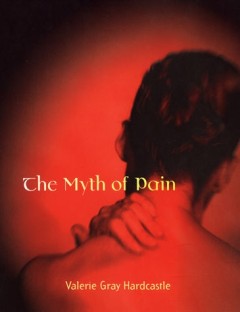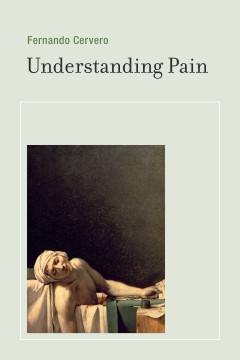Filter by

Feeling pain and being in pain
"A Bradford book."An examination of the two most radical dissociation syndromes of the human pain experience--pain without painfulness and painfulness without pain--and what they reveal about the complex nature of pain and its sensory, cognitive, and behavioral components.In Feeling Pain and Being in Pain, Nikola Grahek examines two of the most radical dissociation syndromes to be found in huma…
- Edition
- 2nd ed
- ISBN/ISSN
- 9780262274234
- Collation
- 1 online resource (181 pages)
- Series Title
- -
- Call Number
- -

The myth of pain
"Hardcastle offers a biologically based complex theory of pain processing, inhibition, and sensation and then uses this theory to make several arguments: (1) psychogenic pains do not exist; (2) a general lack of knowledge about fundamental brain function prevents us from distinguishing between mental and physical causes, although the distinction remains useful; (3) most pain talk should be elim…
- Edition
- -
- ISBN/ISSN
- 058517380X
- Collation
- 1 online resource (xv, 298 pages) :illustrations.
- Series Title
- -
- Call Number
- -

Pain :new essays on its nature and the methodology of its study
What does feeling a sharp pain in one's hand have in common with seeing a red apple on the table? Some say not much, apart from the fact that they are both conscious experiences. To see an object is to perceive an extramental reality--in this case, a red apple. To feel a pain, by contrast, is to undergo a conscious experience that doesn't necessarily relate the subject to an objective reality. …
- Edition
- -
- ISBN/ISSN
- 9780262316262
- Collation
- 1 online resource (xvii, 423 pages) :illustrations
- Series Title
- -
- Call Number
- -

Understanding Pain: Exploring the Perception of Pain
Includes index.Cervero explores the mechanisms and the meaning of pain. You touch something hot and your brain triggers a reflex action that causes you to withdraw your hand. That kind of pain is actually good for us; it acts as an alarm that warns us of danger and keeps us away from harm. There is another kind of pain that is more like a curse: chronic pain that is not related to injury. Cerve…
- Edition
- -
- ISBN/ISSN
- 9780262305433
- Collation
- 1 online resource (xv, 172 pages) :illustrations
- Series Title
- -
- Call Number
- -
 Computer Science, Information & General Works
Computer Science, Information & General Works  Philosophy & Psychology
Philosophy & Psychology  Religion
Religion  Social Sciences
Social Sciences  Language
Language  Pure Science
Pure Science  Applied Sciences
Applied Sciences  Art & Recreation
Art & Recreation  Literature
Literature  History & Geography
History & Geography